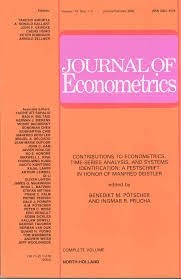
Abadir, K. and Lucas, A. (2004). A comparison of minimum MSE and maximum power for the nearly integrated non-Gaussian model Journal of Econometrics, 119(1):45--71.
-
Affiliated author
-
Publication year2004
-
JournalJournal of Econometrics
We study the optimal choice of quasi-likelihoods for nearly integrated, possibly non-normal, autoregressive models. It turns out that the two most natural candidate criteria, minimum mean squared error (MSE) and maximum power against the unit root null, give rise to different optimal quasi-likelihoods. In both cases, the functional specification of the optimal quasi-likelihood is the same: it is a combination of the true likelihood and the Gaussian quasi-likelihood. The latter is required even if the former is known. The optimal relative weights, however, depend on the criterion chosen and are markedly different. Throughout, we base our results on exact limiting distribution theory. We derive a new explicit expression for the joint density of the minimal sufficient functionals of Ornstein-Uhlenbeck processes, which also has applications in other fields, and we characterize its behavior for extreme values of its arguments. Using these results, we derive the asymptotic power functions of statistics which converge weakly to combinations of these sufficient functionals. Finally, we evaluate numerically our computationally-efficient formulae, then illustrate by means of simulation how our results extend to finite samples and what recommendations they imply for the importance assigned to the Gaussian quasi-likelihood component. {\textcopyright} 2003 Elsevier B.V. All rights reserved.